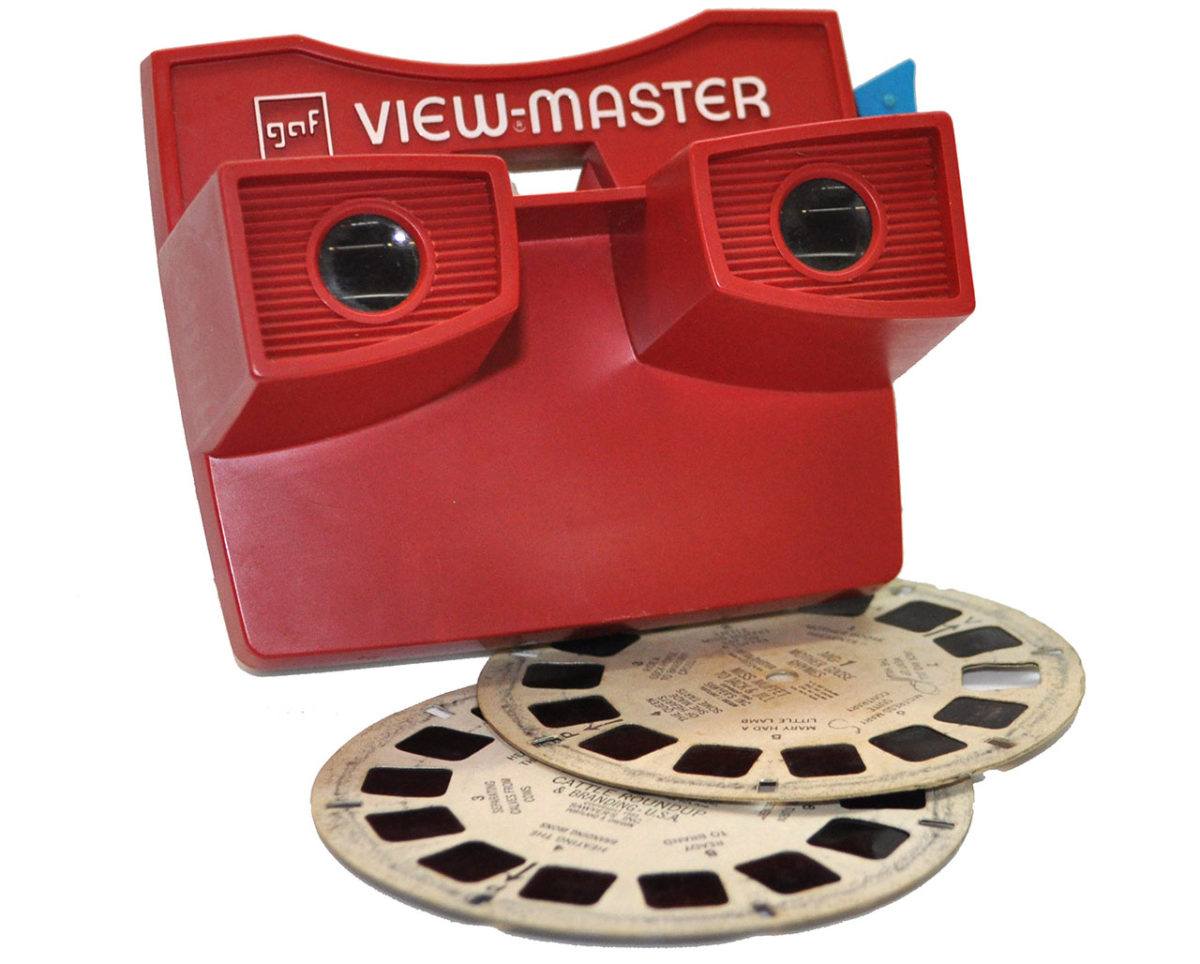A casual search about the history of virtual reality reveals that it has been around for almost a hundred years. VR hardware has not seen a six order of magnitude that computers have. However, the development from a 1930s flight simulator1 similar to the size of a cockpit to a mainstream headset that provides an immersive experience is of a certain order of magnitude. Most of the gains have been made in the past 20 years. Most recently, accelerated by the gaming industry.
The acquisition of oculus rift by Facebook for 2 billion USD showed the world that VR is coming in ways never experienced before. Is this the development stage that will break through for the masses or another step in a long line of gimmicks?
A number of headsets will be competing in this potential disruptive sector. A distinction will have to be made in phone assisted VR, computer backed VR systems and console supported VR. Each compete on price, quality and compatibility. A low range phone assisted system cannot compete with a high end computer backed system on quality. On the contrary it outperforms on price significantly. After all you also need a high end pc to back up the VR system. The console industry will also compete in the gaming sector.
According to PWC2 the video game industry will be driving virtual reality sales up from 2017-2018, with significant revenues after this period due to the development time of content-based business models. A comprehensive report by www.newzoo.com, a non-conventional source, forecasts that the gaming industry over all available medium will be more than US $100 Billion a year3, from 2017 onwards. Mc Kinsey projects that Total global media spending will rise from US $1.6 trillion in 2014 to US $2.1 trillion in 20193. The average age of gamers is well into adulthood4. This target market has enough disposable income to afford high end systems.
I wonder how many of you have already experienced immersive VR, as mainstream availability is still limited. With my new Samsung phone, I got the gear VR as a present. On the first day I floated around in the ocean watching dolphins. Watched the earth from the international Space Station and scared some friends with a rollercoaster ride. Despite the pixelated vision the experience is real enough to grab onto your chair when you are exposed to a thrill seeking virtual reality environment. However, after that novelty period it has been on a shelve untouched.
Disruption might be fuelled by the before mentioned, other industries are expected to see significant changes due to this technology and perhaps even disruption.
A potential live saving application would be in healthcare. Using specialized handheld surgical instruments that connect to a simulation and even provide touch feedback, it is possible to simulate surgeries and reducing the need to practice on animals and humans. It takes between 50 and 100 patients for a surgeon to master a procedure. VR eliminates the exposure of potential harm to patients6. Do you want to be the first patient a surgeon has ever operated on?
A number of military applications are being used and developed. For example; dismounted soldier simulation, real combat training in a virtual world.
Education and training can be enhanced by offering experiences that are not available otherwise. Increasing quality of education and reducing costs of trainings. It is possible to take the class for an educational fieldtrip at the other side of the planet. The early phases of educational VR are centred on the hard sciences — biology, anatomy, geology and astronomy — as the curricular focus and learning opportunities are notably enriched through interaction with dimensional objects, animals and environments7.
Real estate and the holiday industry will also be impacted. Rather than picking an island based on reviews and photos for your summer holiday you can put on a headset and decide for yourself if this is your perfect getaway. Rather than buying a house based on a scale model it is possible to “walk” through your yet to be build home. If you do not have the time to do numerous viewings before finding a suitable apartment, you can do it from anywhere at any time that you see fit.
Engineering has long used drafting software for three dimensional objects. VR takes it a leap further and enables engineers to visualize and test projects in a safe environment. While making changes before the physical project commences.
These are just a few examples of how VR can transform and disrupts industries. Despite numerous reports the past years, the much anticipated 3d printing revolution has yet to conquer mass markets. Are mainstream VR expectations overstated in the short term? Mark Zuckerberg expects that it will be at least 10 years for VR to hit mass markets8? Looking at my headset on the shelf I must agree.
1 http://www.visualcapitalist.com/evolution-virtual-reality/
2 http://www.pwc.com/gx/en/industries/entertainment-media/outlook/segment-insights/video-games.html
5 Global Media Report 2015 – McKinsey & Company
6 http://www.reuters.com/video/2011/08/02/virtual-reality-helps-ready-surgeons-for? videoId=217747418
7 https://techcrunch.com/2016/01/23/when-virtual-reality-meets-education/
Cover picture: http://www.justfourgeeks.com/wp-content/uploads/viewmaster.jpg

